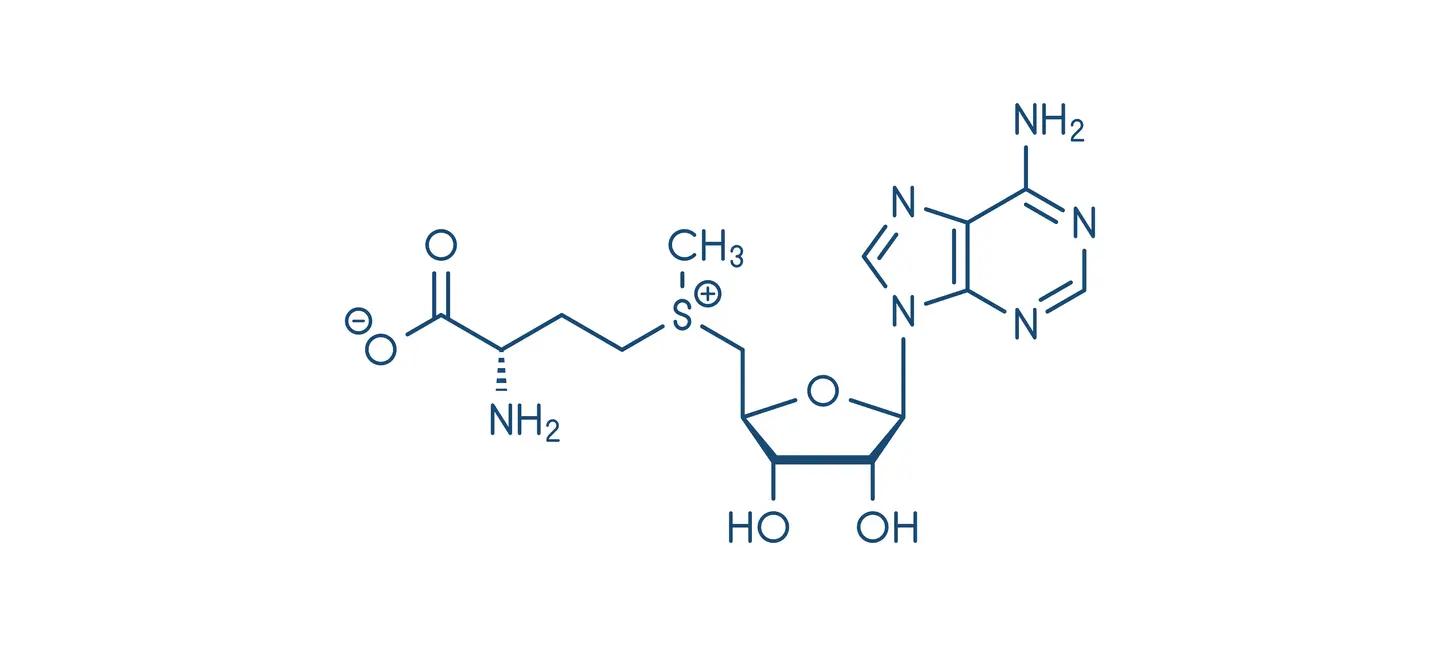
SAMe is a molecule that is made naturally in the body from homocysteine and folate. It can also be made in a lab and taken in supplements.
SAMe is involved in the formation, activation, and breakdown of other chemicals in the body, including hormones, proteins, and certain drugs. The body uses it to make certain chemicals that play a role in pain, depression, liver disease, and other conditions.
People most commonly take SAMe for depression and osteoarthritis. It is also used for anxiety, liver disease, fibromyalgia, schizophrenia, and many other conditions, but there is no good scientific evidence to support these uses.
SAMe has been available as a dietary supplement in the US since 1999, but it has been used as a prescription drug in Italy, Spain, and Germany for many decades.
Is It Effective?
NatMed Pro rates effectiveness based on scientific evidence according to the following scale: Effective, Likely Effective, Possibly Effective, Possibly Ineffective, Likely Ineffective, Ineffective, and Insufficient Evidence to Rate.
- Osteoarthritis. Taking SAMe by mouth seems to work about as well as ibuprofen and other similar drugs for reducing symptoms of osteoarthritis. But most people need to take SAMe for about a month before they feel better.
- Reduced or blocked flow of bile from the liver (cholestasis). Taking SAMe by mouth or by IV is about as effective as taking the prescription drug called ursodeoxycholic acid. IV products can only be given by a healthcare provider.
- Depression. Taking SAMe by mouth might reduce symptoms of major depression in some people. It might be helpful for people who don't have a good response to prescription antidepressants. Sometimes it's helpful when used together with prescription antidepressants.
There is interest in using SAMe for a number of other purposes, but there isn't enough reliable information to say whether it might be helpful.
Is it Safe?
When taken by mouth: SAMe is likely safe. Side effects might include gas, diarrhea, constipation, dry mouth, headache, and nervousness, especially at higher doses.
Special Precautions & Warnings:
Pregnancy and breast-feeding: There isn't enough reliable information to know if SAMe is safe to use when pregnant or breast-feeding. Stay on the safe side and avoid use.
Bipolar disorder: SAMe can cause people with bipolar disorder to enter a manic state. If you have bipolar disorder, don't use SAMe.
Inherited disorder called Lesch-Nyhan syndrome: SAMe might make symptoms of Lesch-Nyhan syndrome worse.
Parkinson disease: There is some concern that SAMe might make symptoms of Parkinson disease worse.
Surgery: SAMe might affect the central nervous system. This could interfere with surgery. Stop taking SAMe at least 2 weeks before a scheduled surgery.
Levodopa
Interaction Rating=Moderate Be cautious with this combination.
Levodopa is used for Parkinson disease. SAMe can change levodopa in the body and decrease its effects. Taking SAMe along with levodopa might make Parkinson disease symptoms worse. Do not take SAMe if you are taking levodopa.
Serotonergic drugs
Interaction Rating=Moderate Be cautious with this combination.
SAMe might increase a brain chemical called serotonin. Some medications also have this effect. Taking SAMe along with these medications might increase serotonin too much. This might cause serious side effects including heart problems, seizures, and vomiting.
Herbs and supplements with serotonergic properties: SAMe increases a brain chemical called serotonin. Taking it along with other supplements that have this effect might cause serious side effects, including heart problems, seizures, and vomiting. Examples of supplements with this effect include 5-HTP, black seed, L-tryptophan, and St. John's wort.
SAMe should be taken on an empty stomach, either 30-60 minutes before a meal or two hours after a meal.
SAMe has most often been used by adults in doses of 400-1600 mg by mouth daily for up to 12 weeks. Speak with a healthcare provider to find out what dose might be best for a specific condition.
Ademetionine, Adenosylmethionine, Adénosylméthionine, AdoMet, S-Adenosyl Methionine, S-Adénosyl Méthionine, S-Adenosyl-L-Methionine, S-Adénosyl-L-Méthionine, S-Adenosylmethionine, S-Adénosylméthionine, S-Adenosylmethionine Butanedisulfonate, S-Adenosylmethionine Tosylate, S-Adenosylmethionine Tosylate Disulfate, SAM, SAM-e, Sammy, Samyr.
Information on this website is for informational use only and is not intended to replace professional medical advice, diagnosis, or treatment. While evidence-based, it is not guaranteed to be error-free and is not intended to meet any particular user’s needs or requirements or to cover all possible uses, safety concerns, interactions, outcomes, or adverse effects. Always check with your doctor or other medical professional before making healthcare decisions (including taking any medication) and do not delay or disregard seeking medical advice or treatment based on any information displayed on this website.
© TRC Healthcare 2024. All rights reserved. Use and/or distribution is permitted only pursuant to a valid license or other permission from TRC Healthcare.
